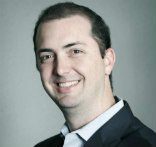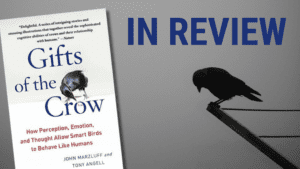
Regenerative Medicine Leaders Emphasized a Focus on Efficiencies and Collaboration to Make a Greater Impact on Patients
“We are here to bring the Community together to change the world!” opened Jeff Galvin, CEO of American Gene Technologies to welcome a large crowd to their Rockville, MD facility for the #RegMed Women’s Panel, co-hosted by the TEDCO managed Maryland Stem Cell Research Fund (MSCRF).
Amritha Jaishanker, Ph.D., MSCRF Manager, opened the panel discussion with a similar message about the MSCRF who has invested more than $140M into a broad range of regenerative medicine programs, including $7.1M in awards just this past month. The strategy behind the MSCRF is much more than just to fund good science, and help move technology to the bedside. Amritha put it, “Our goal is to build the local ecosystem. Building a community is the best way to give every project a chance to succeed.”

A theme that emerged from the discussion, which each panelist seemed to be addressing in their own way, was on “improving efficiencies” to continue to advance the field and impact more patients.
For Margot Connor, CEO of RoosterBio, their focus is on driving efficiencies across the field by addressing a major industry bottleneck. They provide product developers a standardized, commercially relevant stem cell system at a cost that would allow them to produce a reimbursable product that patients could afford. By productizing cell based systems together with bioprocess media they help to accelerate the process for bioprocessing, tech transfer and manufacturing. What they have done is replicate the “parts and tools” business model that the high tech industry used to achieved efficiencies and scale to deliver lower cost products to the consumer. They are just doing it with the stem cell market and consider themselves a “tools” company.
“AGT keeps the patients in mind at all times.” shared Irene Tennant, Clinical Affairs Director at AGT. “We need to improve processes all along the path starting at early stage to get cures to patients faster and cheaper.” Tennant emphasized. By addressing the critical path for drug development they are challenged to make efficiencies at each step, but only if those efficiencies are addressable to the clinician, or the regulator. They see that linear approach to drug development is no longer working and that the village of people (clinicians, regulators, vendors, manufacturers, etc.) all have to be there and communicating upfront to deliver efficiencies. Their product, a lentiviral platform technology is often described by relating viral vectors to the bits and bites for the human computer; another reference to the high tech industry.

For Jennifer Elisseeff, Ph.D., the Academic researcher on the panel, who has an impressive Industry resume as well having taken sabbatical to commercialize her earlier research. She has also been the first focus on impacting the immune environment to create optimal conditions for regeneration, bringing about the emergence of Regenerative Immunotherapies. Elisseeff approaches research with an engineering background so her focus has always been on translation and getting to the clinic. She noted the transformational culture shift happening at Hopkins now to focus on translation with more energy and infrastructure in place to get technologies out.
Her approach has always been that efficiency starts by having a collaborative mindset. She feels that relationships between academia and industry must be rooted in a true partnership, and she would spend months and months to nurture that partnership. “Having that mindset is a win-win.” Elisseeff states. “It helps the company keep more of a straight line scientifically and the company can teach so much to the academics about the clinical trial side.” It must be working because she’s manufacturing at Hopkins for the first time and also now starting her first phase 2 trial, also while at Hopkins. Taking the research much further along while in academia creates great efficiencies in commercialization, in part by de-risking the investment and making it cheaper to bring to market.
(2/2) #regmed18 Hot trends: Increased investment, syntheticbiology, 3Dbioprinting, exosomes, approvals & efficiencies; need for > dialogue among industry, univ, regulators; importance of strat partnerships, workforce initatives, co culture @americangene @MD_Stem_Cell @RoosterBio pic.twitter.com/fIVNr8Qz3J
— Judy Costello (@judycostello) May 24, 2018
There were many other topics covered by these industry leaders who probably could have talked for hours about the impact that each of them were making on the field. While many people would have had to pay thousands of dollars and fly thousands of miles to hear a panel as rich with expertise and accomplishments as this. That’s just one of the great benefits of being part of the strong biotech community in Maryland. It was clear from the panel discussion and the engaged conversations with the audience afterwards that TEDCO’s “community strategy” is working. The MSCRF community is producing some of the most innovative new technologies that are spinning out to become leading companies in the field, making Maryland the true epicenter of regenerative medicine.
RoosterBio’s Margot Connor said it best that, “The more that we can work together, the more streamlined things can get and the more patients we can reach. We can not only have a successful business or venture but also do good and bring more treatments to patients in need.”
Stay tuned for more events from the MSCRF and TEDCO such as the upcoming Stem Cell Research Symposium and Entrepreneur Expo in October.
Author:
Chris Frew, @biotechmd
- About the Author
- Latest Posts
Over the past 11 years, Chris has grown BioBuzz into a respected brand that is recognized for its community building, networking events and news stories about the local biotech industry. In addition, he runs a Recruiting and Marketing Agency that helps companies attract top talent through a blended model that combines employer branding and marketing services together with a high powered recruiting solution.






